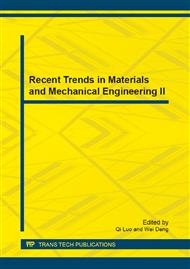[1]
Timmis J., et al. Theoretical advances in artificial immune systems[J]. Theoretical Computer Science, 2008. 403(1): 11-32.
DOI: 10.1016/j.tcs.2008.02.011
Google Scholar
[2]
Hofmeyr S, Forrest S. Architecture for an artificial immune system[J]. Evolutionary Computation, 2000. 8(4): 443-473.
DOI: 10.1162/106365600568257
Google Scholar
[3]
Dasgupta D. Immunity-based intrusion detection system: A general framework[C]/ The 22nd National Information Systems Security Conf. 1999: 147-160.
Google Scholar
[4]
Harmer P, et al. H. An artificial immune system architecture for computer security applications[J]. IEEE Transaction on Evolutionary Computation, 2002. 6(3): 252-280.
Google Scholar
[5]
Kim J, Bentley P. Towards an artificial immune system for network intrusion detection: An investigation of dynamic clonal selection[C]/ Congress on Evolutionary Computation (CEC 2002). 2002: 1015-1020.
DOI: 10.1109/cec.2002.1004382
Google Scholar
[6]
Kim J, Bentley P. Immune memory and gene library evolution in the dynamic clonal selection algorithm[J]. Genetic Programming and Evolvable Machines, 2004. 5(4): 361-391.
DOI: 10.1023/b:genp.0000036019.81454.41
Google Scholar
[7]
Kim J, et al. Immune system approaches to intrusion detection–a review[J]. Natural computing, 2007. 6(4): 413-466.
Google Scholar
[8]
Kim J, Bentley P. An evaluation of negative selection in an artificial immune system for network intrusion detection[C]/ Proceedings of Genetic and Evolutionary Computation Conference (GECCO 2001). 2001: 1330–1337.
DOI: 10.1109/cec.2001.934333
Google Scholar
[9]
Timmis J. Artificial immune systems—today and tomorrow[J]. Natural Computing, 2007. 6(1): 1-18.
Google Scholar
[10]
Guiyang Li, Tao Guo, Receptor editing-inspired real negative selection algorithm[J], Computer Science, 2012. 39(8): 246-251.
Google Scholar
[11]
Wei Luo, Li Ma, Xiaoning Li, Receptor editing and revision in peripheral T ceHs [J], Chinese Journal of Microbiology and Immunology, 2008. 3: 278-281.
Google Scholar
[12]
Stibor T, et al. A comparative study of real-valued negative selection to statistical anomaly detection techniques[C]/ Proceedings of Second International Conference on Artificial Immune System (ICARIS 2005). 2005: 262-272.
DOI: 10.1007/11536444_20
Google Scholar


